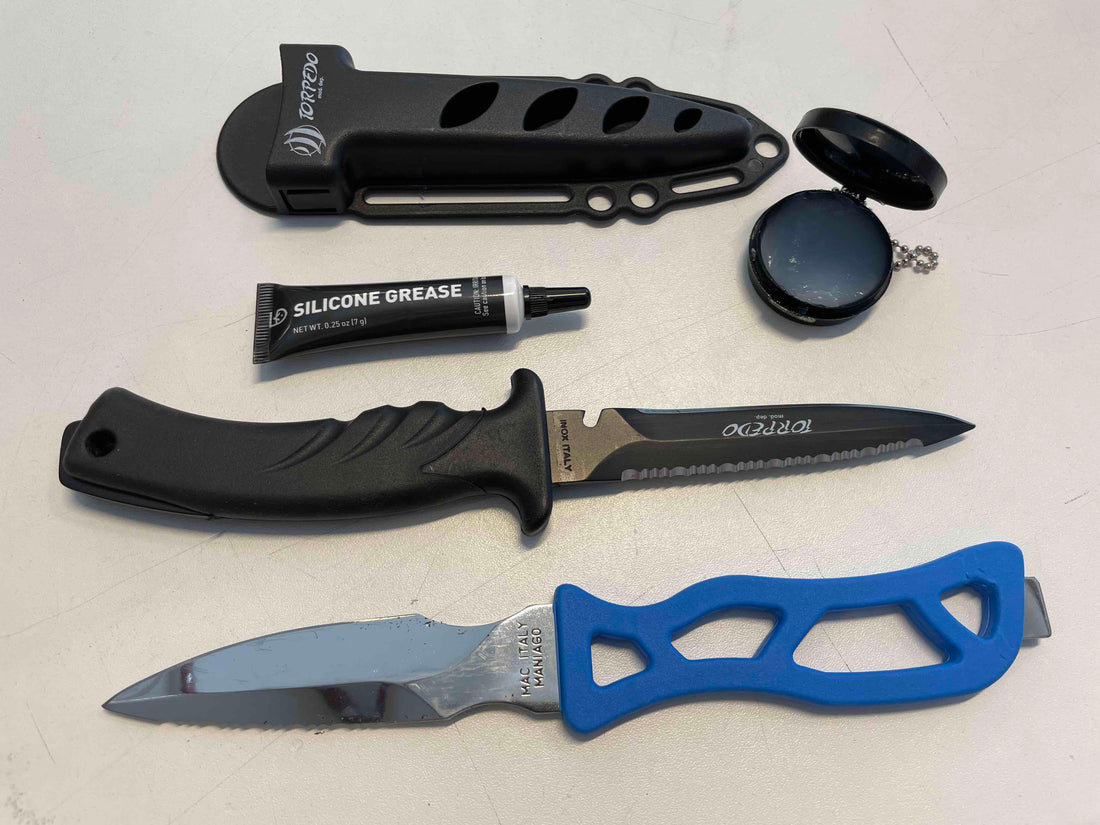Diving knives are supplied in many different varieties and qualities, but the same for all of them is that they need good maintenance if you want to ensure a long life and prevent corrosion. In this article, we share what you need to know to keep your diving knife sharp and looking good for a long time.

We start with what damages your knife. The biggest culprit is salt water. Even in stainless steel or titanium, the salt water will corrode your knife if it is not rinsed well in fresh water after use and then allowed to dry before being placed back in the knife sheath.
- Always rinse the knife in fresh water after use and let it dry before placing it back in the knife sheath.
Diving knives are a tool and must be used. You should still avoid using the diving knife on metal. This can lead to a reaction between the diving knife and the metal it comes into contact with, which in turn can lead to corrosion/rust on even stainless diving knives.
- Do not use your diving knife against metal objects
New diving knives are usually inserted with a thin layer of grease or silicone. If you regularly apply a new layer of such grease, it will prevent salt water from coming into direct contact with the metal of your diving knife. This significantly increases the life of your diving knife.
- Insert the knife blade with GearAid silicone grease or other grease products for knives.
So you might wish you had read this before your dive knife looks like it's ready for scrap, but don't worry. Even a diving knife that looks rusted through can be given new life with the correct treatment. Here are some good tips on how to restore a diving knife.
Step 1. Wash the knife blade thoroughly with a detergent (not water). You can also soak the knife in vinegar and then sprinkle baking powder over the knife blade. Leave this mixture on for an hour before you clean the blade and proceed to the next step.
Step 2. Now you have removed loose particles, salt and other loose material from the knife blade, now you must remove the rust. Find a cloth and moisten it well with an oil product such as WD-40, Vaseline or similar, Wrap the knife tightly in the cloth and leave it for a few hours so that the oil soaks into the rusted areas. After a couple of hours, scrape off the rust that has loosened and repeat the process if there is more rust that needs to be removed. You can use soft steel wool for the job if the cloth you are already using doesn't do the job.
Step 3. Use a clean rag/cloth to wipe the knife completely clean and you're done. If the knife blade is dull, use a sharpener or knife sharpener lightly and carefully. When you are satisfied with the result, apply silicone/grease .
Good diving trip!

